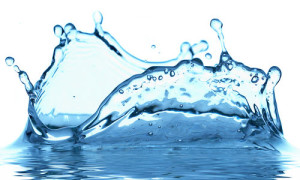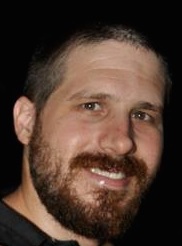Republished by permission of the author.
 This is part of my ongoing series of articles looking into the science around various popular claims. My goal is not necessarily to “debunk” (though that will often be the result) but more to see what the actual scientific consensus is which may be different from what we are often told from friends or news sources. In this case, a friend of mine suggested I look into the truth of the need for at least eight 8-ounce (“8×8”) glasses of water a day.
This is part of my ongoing series of articles looking into the science around various popular claims. My goal is not necessarily to “debunk” (though that will often be the result) but more to see what the actual scientific consensus is which may be different from what we are often told from friends or news sources. In this case, a friend of mine suggested I look into the truth of the need for at least eight 8-ounce (“8×8”) glasses of water a day.
Methodology
I do a quick search for the top sites making the claim(s). When they refer to their sources, which is itself infrequent, I take a look at those studies (as well as others that cite them) to see if the studies actually match the claim. At times, the studies might turn out to have been superseded my newer research or discredited for one reason or another. Additionally I make heavy use of Google Scholar to locate studies on the topic. Wikipedia will often be a jumping off point, but will not itself be used as a source (for obvious reasons). Also, blogs and non-scientific sites are not considered sources for the side of “science” but will be used for the claim side. In this particular case, I did not end up using the “claim” sources as this topic is pop culture enough to not need to take up space with specific quotes.
Summary
I was actually surprised to find out that the recommended intake of water was in fact in the range of 90 ounces (2.7L) for women and 120 ounces (3.7L) for men (really it depends on age and weight). In other words, more than 64 ounces. However, at least 20% of this will come from your daily food intake. More importantly it is incorrect to claim that tea, soft drinks and coffee don’t count toward the intake, when in fact they do. Mildly alcoholic beverages have been found to show a small increase in the time it takes to rehydrate from exercise. So there is absolutely no need to feel obligated to down 2 full liters of plain water daily. The average person gets pretty well within range of the recommended intake without trying too hard.
Disclaimer
None of what is written here should be construed as medical advice, as I am certainly in no way qualified to provide that.
The Claims
Claim 1: An adult requires 64 ounces (“8×8″) of water a day
What the science says: Intriguingly, the recommendation of the Institute of Medicine (IOM) is actually a bit higher for a normal adult. Taking a look at the “Dietary Reference Intakes: Electrolytes and Water” published by the Institute of Medicine’s (IOM) Food and Nutrition Board, female adults should have 2.7L/day and males should have about 3.7L. However, they state that “about 20%” of that will come from food, leading to about 2.16L (73oz) and 2.96L (100oz), respectively, that should be consumed in liquid form.
This is technically an average, as the actual recommendation is really based on your weight (so bigger folks like myself actually need more). The best number I can find is about 35 mL/kg, which translates to about .5 oz/pound. So someone around 170 lbs would “need” about 80 or so ounces, while someone closer to 200 pounds would go for 100 ounces.
What I found cool was that even in the “original” source for the recommendation, it mentions that most of the fluid intake would come from food, but that people ignored that part. From a very comprehensive review of the available literature done by Heinz Valtin of Dartmouth:
According to J. Papai (65), P. Thomas has suggested a different origin for 8 × 8. Thomas reminds us that in 1945 the Food and Nutrition Board of the National Research Council wrote (31): “A suitable allowance of water for adults is 2.5 liters daily in most instances. An ordinary standard for diverse persons is 1 milliliter for each calorie of food. Most of this quantity is contained in prepared foods.”
Thomas suggests that the last sentence was not heeded, and the recommendation was therefore erroneously interpreted as eight glasses of water to be drunk each day.
Summary
The current recommendation is in fact to consume about about 2.5-4L of water a day, of which at least 20% will come from food and that soft drinks and mild alcohol count toward (discussed below). If you look for it, there is also some controversy that the suggested amount is higher than necessary.
Claim 2 : Soft drinks, coffee and alcoholic beverages don’t count
What the science says: Let’s start with the IOM Food and Nutrition’s board actual recommendation (previously quoted above as well):
The AIs provided are for total water in temperate climates. All sources can contribute to total water needs: beverages (including tea, coffee, juices, sodas, and drinking water) and moisture found in foods. Moisture in food accounts for about 20% of total water intake. Thirst and consumption of beverages at meals are adequate to maintain hydration.
So right off the bat the most official recommendation that I’m aware of contradicts popular knowledge.
The reasons are probably related to studies that were done such as that by Ann C. Grandjean and others. In “The Effect of Caffeinated, Non-Caffeinated, Caloric and Non-Caloric Beverages on Hydration“, they concluded:
This preliminary study found no significant differences in the effect of various combinations of beverages on hydration status of healthy adult males. Advising people to disregard caffeinated beverages as part of the daily fluid intake is not substantiated by the results of this study. The across-treatment weight loss observed, when combined with data on fluid-disease relationships, suggests that optimal fluid intake may be higher than common recommendations. Further research is needed to confirm these results and to explore optimal fluid intake for healthy individuals.
Additionally, in a controlled study where one group consumed a standard diet (except with no water, but other beverages) and another had a diet including plain water they concluded “Inclusion of plain drinking water compared to exclusion of plain drinking water in the diet did not affect the markers of hydration used in this study.“
The exception appears to be (at least) for those who are just restarting to drink caffeine after having abstained for a week or so. Basically the body very quickly adapts to counteract the diuretic effects. In a literature review published in the Journal of Nutrition and Dietetics, the authors found:
The available literature suggests that acute ingestion of caffeine in large doses (at least 250–300 mg, equivalent to the amount found in 2–3 cups of coffee or 5–8 cups of tea) results in a short-term stimulation of urine output in individuals who have been deprived of caffeine for a period of days or weeks. A profound tolerance to the diuretic and other effects of caffeine develops, however, and the actions are much diminished in individuals who regularly consume tea or coffee. Doses of caffeine equivalent to the amount normally found in standard servings of tea, coffee and carbonated soft drinks appear to have no diuretic action.
In terms of alcohol, in a study looking at fluid balance recovery after exercise, “there appears to be no difference in recovery from dehydration whether the rehydration beverage is alcohol free or contains up to 2% alcohol, but drinks containing 4% alcohol tend to delay the recovery process.”
Summary
The actual IOM recommendation specifically mentions that non-water beverages fully contribute to the intake. At least one study indicates that mildly alcoholic beverages have a mildly net diuretic effect. One study found no difference in hydration of folks who did not intake any plain water.
Final Note and Further Reading
If you’re interested in some of the other dietary guidelines for vitamins in nutrients, a good jumping off point is the USDA’s National Agricultural Library DRI tables.
1 Institute of Medicine’s Food and Nutrition Board. “Dietary Reference Intakes : Electrolytes and Water”. http://www.iom.edu/Global/News%20Announcements/~/media/442A08B899F44DF9AAD083D86164C75B.ashxVisited 11/18/2009
2 Ann C. Grandjean, EdD, FACN, CNS, Kristin J. Reimers, RD, MS, Mary C. Haven, MS and Gary L. Curtis, PhD. “The Effect on Hydration of Two Diets, One with and One without Plain Water”. J of Am Coll Nutr. Vol 22, No. 2, 165-173 (2003). http://www.ncbi.nlm.nih.gov/pubmed/12672713
3 Valtin, Heinz. “‘Drink at least eight glasses of water a day.’ Really? Is there scientific evidence for ’8 × 8′? Am J Physiol Regul Integr Comp Physiol 283: R993-R1004, 2002. First published August 8, 2002; doi:10.1152/ajpregu.00365.2002 – I would highly recommend my readers take a look at this if they want a more comprehensive look into this topic.
4 Institute of Medicine’s Food and Nutrition Board. “Dietary Reference Intakes : Electrolytes and Water”. – See above.
5 Ann C. Grandjean, EdD, FACN, CNS et al. “The Effect of Caffeinated, Non-Caffeinated, Caloric and Non-Caloric Beverages on Hydration”. Journal of the American College of Nutrition, Vol. 19, No. 5, 591-600 (2000). http://www.ncbi.nlm.nih.gov/pubmed/11022872
6 Ann C. Grandjean, EdD, FACN, CNS, Kristin J. Reimers, RD, MS, Mary C. Haven, MS and Gary L. Curtis, PhD. “The Effect on Hydration of Two Diets, One with and One without Plain Water”. J of Am Coll Nutr. Vol 22, No. 2, 165-173 (2003). http://www.ncbi.nlm.nih.gov/pubmed/12672713
7 R.J Maughan.”Caffeine ingestion and fluid balance: a review”. J Human Nutr. 16:6. p411-420 (2003). http://www3.interscience.wiley.com/journal/118888724/abstract
8 Susan M. Shirreffs and Ronald J. Maughan.”Restoration of fluid balance after exercise-induced dehydration: effects of alcohol consumption”. Journal of Applied Physiology. Vol. 83, No. 4, pp. 1152-1158, October 1997.http://jap.physiology.org/cgi/content/abstract/83/4/1152
_____________________________________________________________________________
 Joshua DeWald is a software engineer and an active and contributing member of the skeptic community. He writes articles that go into some depth into a claim and “what the science says” about it. “The science” is what the established authorities (FDA, CDC, etc) as well as published peer-reviewed (especially systematic reviews grouping larger bodies of papers) have to say on the topic. Josh is another welcome voice of reason bringing together accepted research of those who really know what they are doing.
Joshua DeWald is a software engineer and an active and contributing member of the skeptic community. He writes articles that go into some depth into a claim and “what the science says” about it. “The science” is what the established authorities (FDA, CDC, etc) as well as published peer-reviewed (especially systematic reviews grouping larger bodies of papers) have to say on the topic. Josh is another welcome voice of reason bringing together accepted research of those who really know what they are doing.
Please visit Josh’s blog, What Does the Science Say?
